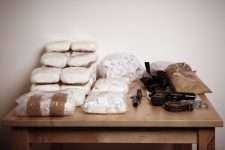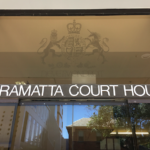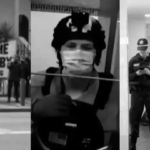Prohibition is a Recipe for Failure

On 2 June 2011, the Global Commission on Drug Policy declared that the “war on drugs has failed”.
The declaration marked a significant shift in public attitude towards the 40-year-old policy launched by US president Richard Nixon that saw the intensification of drug law enforcement worldwide.
The high-level international commission is made up of some of the world’s former heads of state and leading intellectuals. Amongst its members are former UN secretary general Kofi Annan, former US secretary of state George Schultz, and well-known entrepreneur Richard Branson.
The commission’s report outlined that the war on drugs has led to increased drug consumption and supply, a rise in “violent organised crime groups,” the arrest and incarceration of tens of millions of people, and it’s prevented public health measures to reduce the harms associated with drug use.
The drug war was a continuation of global drug prohibition policies that had been intensifying over the sixty years prior to its launch. During that same time, a 13 year policy of alcohol prohibition was enacted in the United States, and the similarities in outcomes it produced are striking.
The Noble Experiment
In 1919, the 18th Amendment to the US constitution was ratified. It banned the manufacture, sale, and transportation of alcohol. Personal possession and use weren’t outlawed. The Volstead Act was then passed to provide authorities with the power to enforce the ban.
Prohibition followed years of campaigning from often religious-based abstinence groups, such as the Temperance Movement, the Prohibition Party, and Anti-Saloon League. The line of thinking was a ban alcohol would put an end to drinking.
The opposite effect
Alcohol consumption rates in the US had been on the decline since 1910. When prohibition took effect in 1920, there was a 30 percent drop in consumption. However, after the initial decrease, consumption rates began steeply rising to levels above those seen a few years prior to the ban.
Drinking rates amongst women began to increase during prohibition. And by 1926, an epidemic of drinking amongst children had emerged, which hadn’t existed prior to the alcohol ban.
There was also a rise in the number of drinking establishments. By 1927, there was an estimated 30,000 illegal bars, or speakeasies, across the country, which was twice the amount of legal establishments that had existed prior to alcohol being outlawed.
Increasing the harms
The ban on booze had a focus on reducing beer consumption in particular, and it was successful in doing so. As alcohol had to be produced on the sly, it was much easier to distil spirits, as brewing requires much more space in production and distribution, which makes it harder to conceal.
So, the members of the American population that continued to indulge in alcohol generally moved onto harder liquor. In 1929, beer consumption was a third of 1909 levels, however, wine and spirit levels were above those seen that same year.
And as the alcohol market was now unregulated, the spirits being produced by moonshiners in their illegal stills were often much stronger than anything that was being produced before the onset of the prohibition.
Homemade moonshine was soon taking its toll. On Christmas day 1922, in New York, there were five reported deaths from people drinking poisoned rum. By 1926 ,750 New Yorkers had died from bad alcohol, while hundreds of thousands were suffering injuries, such as blindness and paralysis.
Harm reduction
These occurrences sound somewhat reminiscent of incidents in Australia today. Over the last twelve months, young people have been hospitalised and some have even died due to toxic batches of ecstasy in Melbourne and on the Gold Coast.
However, the difference now is that health experts have been pushing for the implementation of pill testing in Australia. This evidence-based approach has been saving lives in European countries for decades. But, Australian authorities refuse to let trials of these services take place.
Back in 1920s New York, no one was advocating for alcohol testing services at underground bars.
Rising crime
As prohibition continued, arrests for public drunkenness and other alcohol-related crimes rose. The rates of violent crimes against persons and property increased. And the homicide rate almost doubled. After the repeal of the laws, the murder rate declined over the following decade.
And organised crime groups began to appear. In Chicago, a gang called the Outfit controlled most of the distribution of alcohol in that city. After Al Capone took control of the group in 1925, a bloody gang war broke out with a rival bootlegging group.
The criminal justice system
During the dry period, there was an over allocation of police resources aimed at enforcing the alcohol laws. In 1923, US district attorneys spent 44 percent of their time on alcohol-related cases. There was a backlog in the courts, and prisons were overflowing with alcohol offenders.
And the huge amounts of money being made by organised crime groups led to increased corruption in the system. Police officers and politicians fell prey to receiving bribes. And if you wanted a favourable hearing in the courts, you could always payoff a judge.
Medicinal alcohol
Once the ban was put in place, there were provisions made to allow doctors to prescribe medicinal alcohol. At the time, it was an established belief that alcohol could cure a range of ailments. And more than 64,000 physicians were given liquor-prescribing permits between 1920 and 1926.
While there’s an overwhelming amount of evidence for the medicinal benefits of cannabis today, not many believe in the medical benefits of alcohol anymore. But, despite this, authorities in Australia allow the purchase of liquor at retail outlets, while it’s almost impossible to access medicinal cannabis.
An end to prohibition
As a result of public outcry over alcohol prohibition, and the negative outcomes it was producing, the law was repealed in 1933. The 21st Amendment to the US constitution revoked the provisions of the 18th Amendment. And Americans were free once more to drink at their local bars.
Close to 80 years later, the Global Commission on Drug Policy encouraged governments around the world to experiment with “models of legal regulation of drugs to undermine the power of organised crime and safeguard the health and security of their citizens.”
“This recommendation applies especially to cannabis,” the commissioners added.








